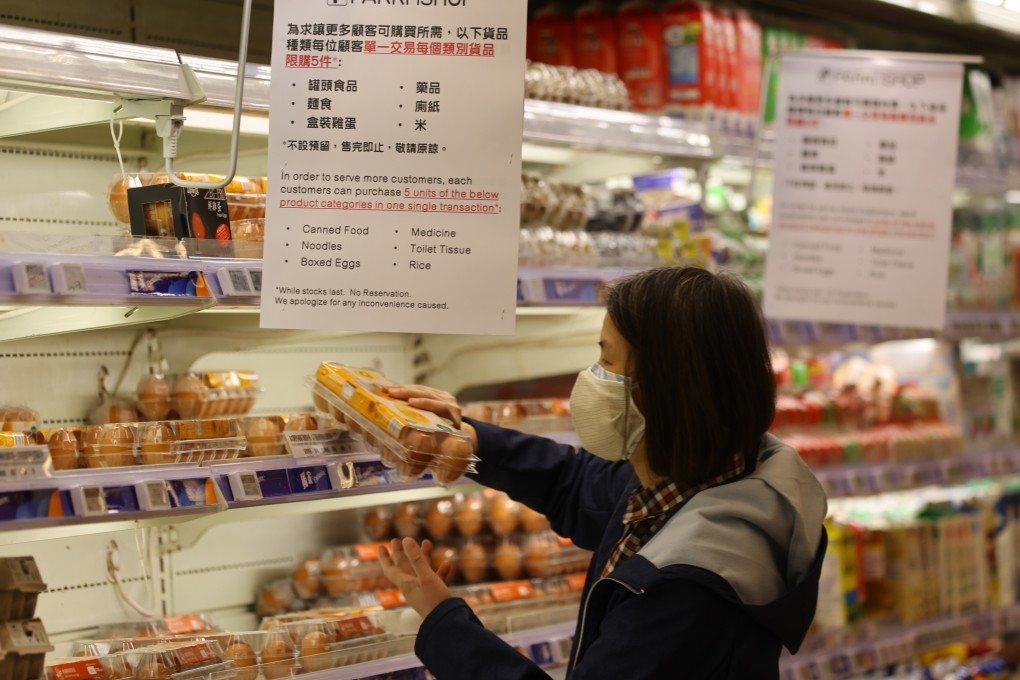Editorial | Food for thought as retailers raise prices
- Supermarket chains should try to share the pain during this time of economic uncertainty, especially with the 1.65 million people living below the poverty line

January to March was one of Hong Kong’s most challenging quarters, as the fifth wave of coronavirus infections took thousands of lives and spread economic uncertainty and hardship. The abrupt suspension of normal life left no one unaffected by inconvenience and sacrifice. For many living on a budget, the last thing they needed was more pressure from the cost of living. But thanks at least in part to supply-chain distortions and pressures on costs driven by the pandemic, that is what happened.
Supermarket prices rose by 4.2 per cent during the period, according to the Consumer Council, which tracked 90 grocery items in 11 product groups at ParknShop, Marketplace and Aeon. At the height of the fifth wave in March, the council’s “Online Price Watch” tool found the biggest price rises in food items with longer shelf lives, including pre-packaged cakes (24.8 per cent), rice (9.2 per cent), eggs (8.2 per cent) and canned vegetables and soup (6.8 per cent).
There are those of us to whom such price rises are a minor irritant compared with the inconvenience of social-distancing rules that upended normal life. But that may not include more than 1.65 million people – nearly a quarter of the population – found to be living below the poverty line in the latest poverty report last November.
The council linked price rises to the sudden re-emergence of panic buying, exacerbated by shortages. The survey also found the aggregate average price of 63 items available at all three major supermarkets rose that month compared with January. These rises do not mirror increases in wages or disposable income.
Supermarket chains have shared in pandemic relief packages intended to maintain employment levels, sparking debate about how to give back to society through their customers. It seems reasonable for people who can least afford price rises to expect that retailers would share the pain through restraint in cost recovery and margins. Many, after all, remain dependent on government support measures. The increases revealed by the Consumer Council survey are therefore disappointing without some transparency about the justification for them. For chains that have prospered from the patronage of ordinary Hongkongers during better times, it may be seen as good customer relations.

